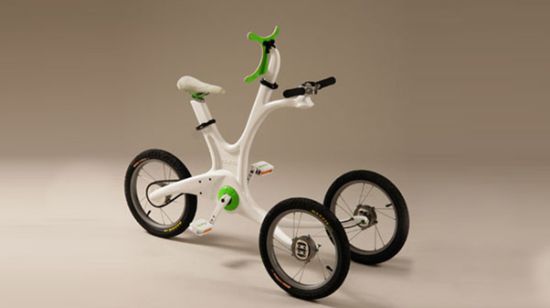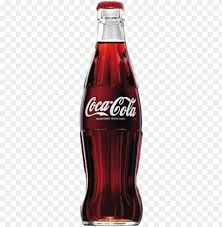Introduction
Industrial Designs establish the language of a product as well as the corporate branding and identity of an enterprise. This article seeks to explain the concept of industrial designs, the requirements for its protection in Nigeria and the benefits of protection to the rights holder, the consumers and the economy.
Industrial Design as an aspect of Intellectual Property
Industrial design is an aspect of Intellectual property ("IP") which focuses on the appearance of a product, resulting from features such as the lines or colours of the product or its ornamentation. An industrial design may consist of 3-dimensional features such as the shape of a product (a Coca-Cola bottle) or two-dimensional features such as patterns (a design on a clothing), lines or colour of a product. It may even consist of a combination of features.

(Photo: megagadget.com)

(Photo: toppng.com)
It is pertinent to note at this point that the concept of industrial design focuses on the appearance of a product and not its technicality or functionality. This means that assuming the content of Pepsi and Coca-Cola were same, Pepsi will not be refused registration solely because Pepsi produces the same content as that of Coca-Cola. What the Patent and Designs Registry (the "Registry") is concerned about is the aesthetic design of the bottle i.e., to ensure that Pepsi has not come to register the same type of bottle Coca-Cola uses, since Coca-Cola has already registered its. Same way a new bicycle design will not be rejected because a similar machine already exist with the same function.
Right to registration and requirements for the protection of Industrial Designs
In Nigeria, by virtue of the provisions of the Patent and Designs Act, the right to registration is vested in the statutory creator, i.e., the person who, whether or not is the true creator, is the first to file an application for registration of the design. Where the applicant is not the true creator, the consent of the true creator must have been obtained and his/her named in the register at the Registry. In order to be protected, an industrial design must conform to the following standards:
- Newness- A design meets the newness criteria if no identical design has been disclosed to the public before the date of filing, or the application for registration, unless it is shown to the Registrar's satisfaction that the creator of the design could not have known that the disclosure had been made. Note that a design that has already been disclosed to the public in an official or officially recognised exhibition may still be protected within six months of such exhibition;
- Originality – Designs are considered original if they have been independently created by the designer and are not a copy or an imitation of existing designs; and
- The design must not be one which is considered to be contrary to public order or morality. For instance, a design the shape of a genital will not be allowed for registration.
Procedure for registration
To register an industrial design in Nigeria, an application must be filed at the Trademarks, Patents and Designs Registry. The application shall be accompanied by:
- A request for registration of the design;
- Applicant's full name and Nigerian address;
- A specimen or photographic presentation of the design;
- The kind or class of product (where a classification has been prescribed) for which the design will be used;
- A signed Power of Attorney where the application is made by an agent;
- Evidence of payment of Prescribed fees; and
- Any other prescribed requirement.
Once the application is examined for conformity, the design is registered and a Certificate of Registration is issued.
Note that a single application may relate to any number of industrial designs not exceeding 50 (fifty), if the products to which the designs relate are of the same kind or class (where a classification has been prescribed); although Nigeria currently has no classes/categories with respect to the registration of designs.
Duration of protection
In Nigeria, the right to a registered design lasts for 5 (five) years but may be extended for two further periods each of 5 (five) years each. Therefore, the total period any product can be registered for protection is 15 years.
Benefits of Protecting Your Industrial Design
The success or failure of a product rests, at least partially, on its look. Therefore, to successfully commercialise a product, an enterprise generally invests time and money to innovate, develop and create products with a new or original design. Below are some of the benefits afforded a creator of a registered Industrial design.
- Provision of exclusive rights: Protecting industrial designs is essential to enable one prevent unauthorised imitation of protected designs by third parties. The owner of a protected industrial design has the right to prevent third parties not having his/her consent from making, selling, exporting or importing articles bearing or embodying a design which is a copy, or substantially a copy, of his/her protected design, when such acts are undertaken for commercial purposes.
- Facilitation of marketing and commercialization: Since industrial designs are aimed at appealing to consumers, they can be an important element of a company's brand and business assets which may increase the market value of a company and its products and facilitate their marketing and commercialization.
- Generation of revenue: Industrial design rights can be sold or licensed to another enterprise, which will then generate revenues for the rights owner and in turn, generate revenue for the economy at large through the payment of taxes, licensing fees, permit charges, etc.
Distinguishing Industrial Design from other IP terms
An industrial design simply put, focuses on the appearance of a product. Examples are the design on TM's shirts, the Coca-Cola bottle, etc.
Copyright is the exclusive right given to the creator of a creative work to reproduce such work, usually for a limited time. Examples are musical, artistic or literary works.
A trademark refers to a sign or any combination of signs (words, numerals, figurative elements, etc.) capable of distinguishing the goods or services of one enterprise from those of other enterprises. Examples are KFC Crispy Strips, Cowbell, the Apple logo, etc.
A patent is a form of intellectual property that gives its owner the legal right to exclude others from making, using, selling and importing an invention for a limited period of years, in exchange for enabling a public disclosure of the invention.
Protection of Industrial designs in other countries
As a general rule, industrial design protection is territorial and this means that industrial design rights are limited to the country where protection is sought and granted. Where protection is sought in several countries, separate national applications must be made according to the applicable national law and procedures (which usually differs from one country to another).
To avoid having to submit applications in each country where protection is sought, the Hague Agreement Concerning the International Registration of Industrial Designs (the "Agreement") which is administered by the World Intellectual Property Organisation (WIPO) has come to help. The Agreement enables creators of designs to protect their designs in a large number of territories through a single international application filed with the international bureau of WIPO, in one language and with one set of fees in one currency. This single application results in a single international registration.
More than 11,280,000 industrial designs have been registered under the WIPO-administered Hague System and in participating national collections. The Global Design database set up by WIPO enables simultaneous searches via a single, intuitive interface across all international industrial designs registered under the Hague System as well as in participating national collections. To access the database, visit https://www3.wipo.int/designdb/en/index.jsp.
The Hague Express database is a first step in industrial design searches. It is updated weekly and it provides information, on current and past industrial designs registered under the Hague System. To access the database, visit https://www3.wipo.int/designdb/hague/en/.
The Locarno Classification is an international system used to classify goods for the purposes of the registration of industrial designs and is administered by WIPO. However, it is note-worthy that Nigeria is not a signatory to the Agreement and as such, has no classes of registration for designs.
Conclusion
Conclusively, an industrial design is without doubt the language of a product as well as its identity. It drives a consumer's choice and is a key factor in the consumer's purchase decision. Industrial designs and their protection is therefore, very important for both small- and medium sized enterprises (SMEs) and larger companies.
The content of this article is intended to provide a general guide to the subject matter. Specialist advice should be sought about your specific circumstances.
